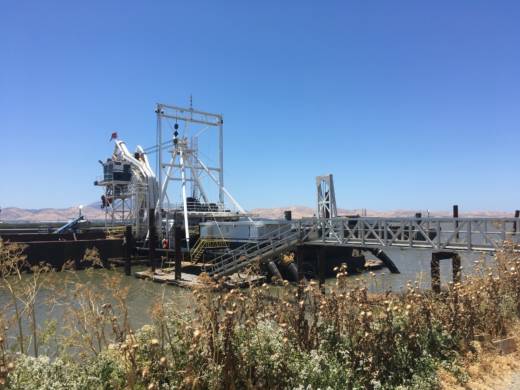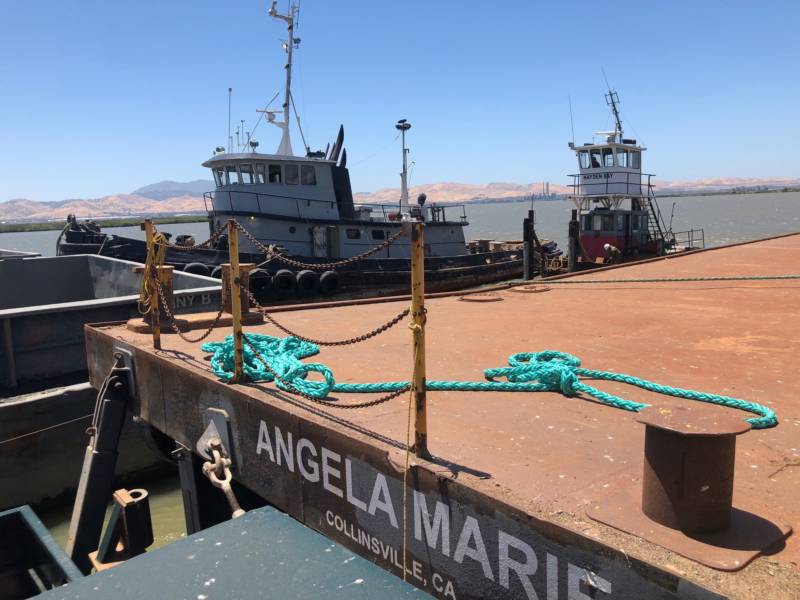This is part of our ongoing series about where taxpayer funds from 2016’s Measure AA to restore the San Francisco Bay are going. Find all the stories here.
The area known as Montezuma, about 20 miles southeast of Fairfield in Solano County, is unassuming. It’s surrounded by former tidal wetlands that are golden-brown and its south end is bordered by the California Delta. This is where two major rivers meet: the San Joaquin River and the Sacramento River.
Cassie Pinnell, a biologist with the Montezuma Wetlands Restoration Project, says these two rivers are major corridors for federally-listed California fish like Chinook Salmon and Delta Smelt. “These rivers are bringing fish from far up in California, dumping them right here,” Pinnell says. “They’re looking for a place to eat, hide and grow, as they work their way out to the bay and the ocean.”
Over 100 years ago, Montezuma and the surrounding areas by the Delta were lush tidal wetlands filled with wildlife. But, like so many areas in the bay, the wetlands here were drained for farming and ranching.
Measure AA, a nine-county parcel tax approved in 2016, allocates $1.6 million to help restore more than 600 acres of tidal marsh, enhance the upland areas of the marsh and re-establish the endangered fish nursery.


